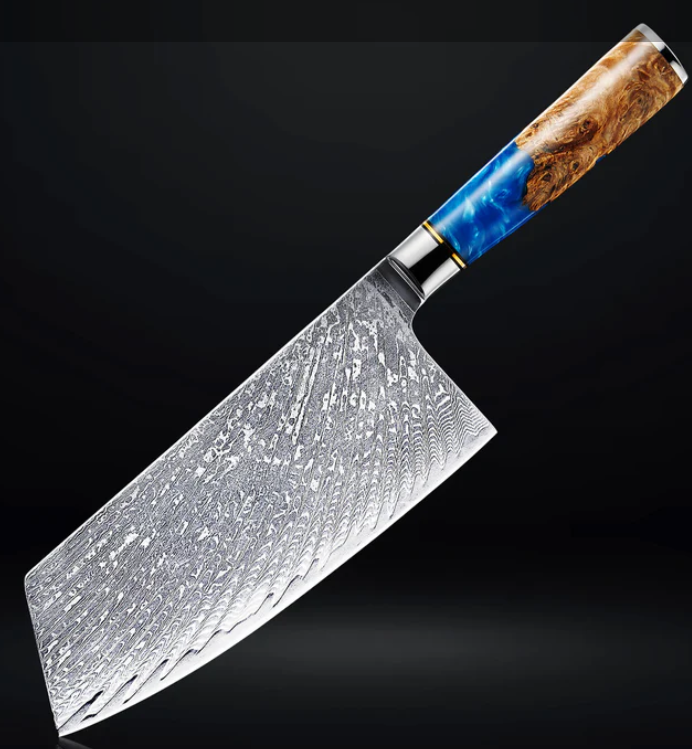When it comes to precision, balance, and craftsmanship, few tools can rival a Japanese kitchen knife. Whether you’re a seasoned chef or a passionate home cook, investing in one can completely transform how you cook — from effortless slicing to razor-sharp presentation. But with so many styles, steels, and brands on the market, knowing which Japanese knife to buy can be overwhelming.
This guide breaks down everything you need to know before buying your next knife — what to look for, the different types available, and how to choose one that fits your cooking style and budget.
Why Japanese Knives Are So Special
Japanese blades are famous for their razor-sharp edges, lightweight design, and meticulous craftsmanship. The tradition of Japanese sword-making, dating back centuries, evolved into knife-making that values sharpness and precision above all else.
Compared to Western knives, Japanese ones are often thinner, lighter, and harder. This means they hold an edge longer and deliver cleaner cuts — ideal for delicate ingredients like fish, herbs, or vegetables.
However, their hardness also makes them a bit more brittle, which is why proper handling and care are key.
Popular Types of Japanese Kitchen Knives
Before you buy, it’s important to understand the major styles. Each knife is designed with specific tasks in mind.
1. Gyuto (Chef’s Knife)
The Gyuto is Japan’s answer to the Western chef’s knife — a versatile, all-purpose blade perfect for slicing meat, chopping vegetables, and mincing herbs.
If you’re only buying one Japanese knife, start here.
2. Santoku
Meaning “three virtues,” the Santoku excels at cutting meat, fish, and vegetables. Its shorter, wider blade makes it easier to control, making it a great choice for home cooks.
3. Nakiri
Designed for vegetables, the Nakiri has a rectangular blade that glides through produce with minimal resistance. It’s perfect for anyone who loves plant-based cooking.
4. Yanagiba
Used by sushi chefs, the Yanagiba is a long, single-beveled knife for slicing sashimi and delicate proteins. It creates paper-thin cuts that preserve texture and flavor.
5. Deba
A heavy, thick-spined knife used for filleting fish or breaking down poultry. Despite its bulk, it’s engineered for precision.
Understanding Japanese Knife Materials
Japanese kitchen knives come in various steels — and knowing what each one means helps you buy smart.
· Carbon Steel – Extremely sharp and easy to hone, but prone to rust. Great for professionals who maintain their tools regularly.
· Stainless Steel – Resistant to corrosion and lower maintenance. Ideal for everyday users.
· High-Carbon Stainless Steel – Combines sharpness and durability; the best of both worlds.
· Powdered Steel (SG2, R2, etc.) – Ultra-premium, offering incredible sharpness and edge retention.
If you want a knife that lasts and requires minimal upkeep, high-carbon stainless steel is often the best choice.
How to Choose the Right Japanese Knife for You
Here’s how to narrow down your choice:
1. Define Your Needs: Are you slicing fish, chopping vegetables, or doing a bit of everything?
2. Consider the Handle: Japanese knives typically use a “Wa-handle” — round or octagonal wood handles that are lightweight and balanced.
3. Pick the Right Size: For most cooks, a Gyuto or Santoku between 180–210mm is ideal.
4. Set a Budget: A good entry-level Japanese knife starts around $80–$150, while handcrafted artisan models can cost several hundred.
5. Buy from Trusted Sources: Avoid cheap imitations. Authentic brands like Shun, Global, Tojiro, and Miyabi have proven quality and consistency.
For a curated selection of authentic blades, you can check out a detailed guide on premium Japanese Kitchen Knives — it explains the top brands and what makes each unique
Caring for Your Japanese Knife
A well-cared-for knife can last decades. Follow these tips:
· Always hand-wash your knife immediately after use.
· Dry it thoroughly to prevent rust.
· Use a wooden cutting board — glass or plastic can dull the edge.
· Hone regularly and sharpen with a whetstone rather than an electric sharpener.
· Store safely in a knife block or magnetic strip to protect the blade.
These small habits will preserve your knife’s performance and prevent costly damage.
Common Mistakes to Avoid
Even the best knife can disappoint if used incorrectly. Avoid these pitfalls:
· Cutting frozen food or bones with thin blades.
· Tossing knives into the dishwasher.
· Using the wrong knife for the job (e.g., slicing bread with a Yanagiba).
· Over-sharpening or sharpening at the wrong angle (Japanese knives usually use 15° per side).
By treating your knife with care, you’ll not only extend its life but also make every meal easier and more enjoyable.
Where to Buy Authentic Japanese Knives
You can find Japanese knives at specialty kitchen stores, high-end department stores, or reputable online retailers. If you’re shopping online, look for sellers that specify blade steel type, manufacturer origin, and warranty details.
For anyone ready to take their cooking to the next level, buying a genuine Japanese kitchen knie is one of the smartest investments you can make. The difference in sharpness and control is instantly noticeable — once you try one, it’s hard to go back to ordinary knives.
Final Thoughts
Japanese kitchen knives are more than just cooking tools — they’re works of art, crafted with centuries of tradition and precision. Whether you’re drawn to the versatility of a Gyuto, the balance of a Santoku, or the artistry of a Yanagiba, the key is to choose a knife that suits your cooking habits and care routine.
When you buy a Japanese knife, you’re not just purchasing a blade — you’re investing in an experience. With the right care and attention, it will serve you faithfully for years, elevating every dish you prepare.




